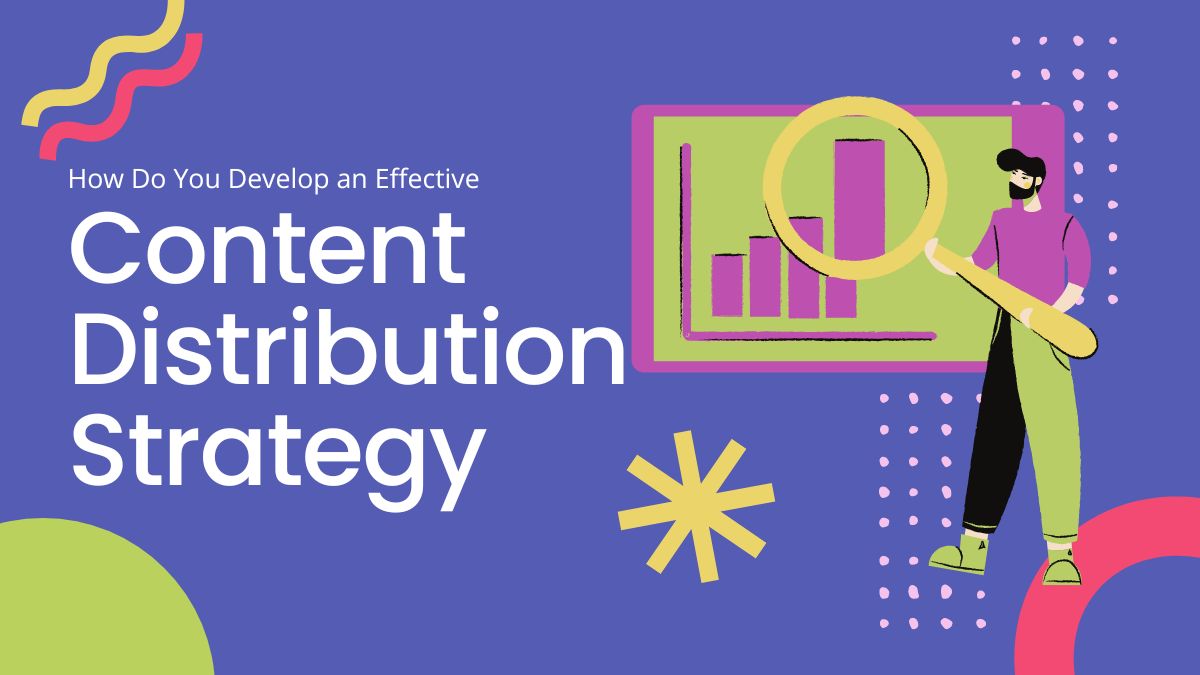
Creating high-quality content is just the first step in a successful content marketing campaign. To get the most out of your content, you need to distribute it effectively to reach your target audience. In this blog post, we’ll outline the steps to developing an effective content distribution strategy.
Step 1: Define Your Target Audience
When it comes to developing a content distribution strategy, the first step is to define your target audience. Knowing who you are trying to reach with your content is crucial for creating effective and impactful marketing campaigns. Your target audience should be clearly defined and specific so that you can tailor your content to their needs and preferences.
To begin defining your target audience, start by identifying key characteristics such as age range, gender, location, occupation or industry, interests, and buying behaviors. It is important to understand what motivates them and what challenges they face in their daily lives. By conducting research through surveys or social media analytics, you can learn more about their preferences and pain points.
Once you have a clear understanding of your target audience, you can create content that speaks directly to them. This will enable you to deliver personalized messages that engage with them on an emotional level.
Step 2: Identify the Right Channels
Creating a content distribution strategy is vital for any business seeking to reach and engage its target audience effectively. Identifying the right channels to promote your content is an essential step in this process. With so many platforms available, it can be challenging to determine which ones are worth investing time and resources in.
To identify the most suitable channels for distributing your content, you first need to understand your target audience’s behavior and preferences. For instance, if you’re targeting a younger demographic, social media platforms like Instagram or TikTok may be more effective than email marketing or direct mail. On the other hand, older audiences may prefer traditional advertising methods such as print ads or radio commercials.
It’s also essential to consider where your competitors are promoting their content and whether those channels align with your goals.
Step 3: Develop a Content Distribution Plan
Developing a content distribution plan is crucial to the success of your content marketing strategy. Once you have identified your target audience and the right channels, it’s time to figure out how you will distribute your content effectively. The goal is to get your message in front of as many people as possible, while also ensuring that it reaches the right people.
The first step in developing a content distribution plan is to determine which channels are most effective for reaching your target audience. This may include social media platforms like Facebook and Twitter, email marketing campaigns, or even paid advertising on search engines like Google. It’s important to take into account where your audience spends their time online and what types of content they engage with most frequently.
Once you have identified the channels that are most effective for reaching your target audience, it’s time to develop a strategy for distributing your content.
Step 4: Leverage Your Existing Network
In today’s digital age, content creation has become a fundamental part of every business. However, creating great content is only half the battle; distributing it effectively is equally important. This is where leveraging your existing network comes in handy. When you share your content with people who already know and trust you, they are more likely to engage with it and even share it with their networks.
Your existing network can include family, friends, colleagues, customers or clients, industry peers, and even social media followers. The key is to identify those within your network who would be interested in your content and reach out to them directly. You can start by sending them an email or direct message introducing your latest piece of content and asking for their feedback or opinion.
Another effective way to leverage your existing network for content distribution is by utilizing employee advocacy programs.
Step 5: Measure and Refine Your Strategy
As the saying goes, “if you can’t measure it, you can’t improve it.” This rings true for content distribution strategies. Measuring your results allows you to understand what is working and what isn’t. By analyzing your data, you’ll be able to refine your strategy and make adjustments that will help ensure its success.
There are several key metrics to keep an eye on when measuring the effectiveness of your content distribution strategy. These include website traffic, engagement rates, social media shares, and conversions. Tracking these metrics over time will give you a clear picture of how well your strategy is performing and where improvements need to be made.
Once you have a solid understanding of how your content is performing across various channels, it’s time to start refining your strategy.
Conclusion
Developing an effective content distribution strategy requires careful planning, research, and execution. By following the steps outlined above, you can create a strategy that reaches your target audience, leverages your existing network, and drives engagement and conversions. Remember to measure and refine your strategy over time to ensure continued success.